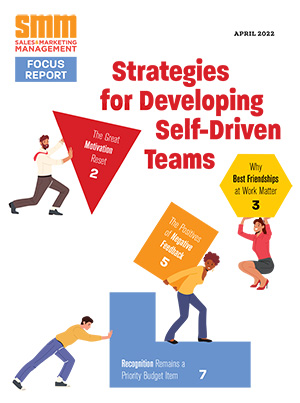Key performance indicators (KPIs) are the foundation of any successful go-to-market (GTM) strategy. However, there are many metrics that are nice to know, but don’t get you closer to your revenue goals.
Making matters even more complicated is the fact that, according to recent Mural research, most GTM teams frequently experience misalignment – aka they’re working toward different goals and tracking different KPIs.
That’s why the best GTM teams align on a common set of metrics: customer acquisition cost, customer lifetime value, sales cycle length and conversion rate, and churn.
Customer Acquisition Cost
Customer acquisition cost (CAC) tells you how expensive it is to acquire a new customer. The formula is simple:
CAC = Total GTM Spend ÷ Number of New Customers
Sales and marketing leaders should use this metric to decide exactly where to spend their time and money, focusing on the strategies with the lowest CACs. In B2B sales, where buying committees and long lead times are common, CAC can balloon quickly without showing up on standard dashboards.
GTM teams should pay close attention to the following:
- CAC by channel (paid, content, outbound, etc.) to reallocate spend faster
- CAC by segment (SMB vs enterprise) to spot profitability gaps
- CAC trends over time to flag GTM inefficiencies early
High CAC isn’t always bad if it’s paired with a strong lifetime value. But if your CAC is rising and sales cycles are stalling, it’s time to look at conversion rates and lead quality.
Using CACs across teams cuts unnecessary spending and ensures that every dollar is invested in the right channels and tactics that bring in the right prospects. This directly reduces the overall cost of acquiring new customers and makes the entire GTM effort more efficient.
Customer Lifetime Value
Customer Lifetime Value (LTV) forecasts the total revenue you can expect to make from a single customer over their entire relationship with your company. By tracking LTV, sales and marketing leaders can identify which customers will drive the most revenue, and adjust their GTM strategy to focus on maintaining and growing those relationships.
LTV = Average Purchase Value x Purchase Frequency x Customer Lifespan
When a GTM team uncovers its high-LTV customers, it can work together to acquire more of them. For example, a software company could find that enterprise data teams have 3x the LTV of other segments. Marketing shifts budget to high-value content for that audience. Sales prioritizes accounts with similar profiles. Client success then builds tailored onboarding.
By aligning GTM teams around LTV, you can stop chasing short-term wins and start building a loyal, profitable customer base. A healthy LTV to CAC ratio is generally 3 to 1 – meaning that you generate $3 for every $1 spent to acquire a customer.
Sales Cycle Length and Conversion Rates
Sales cycle length and conversion rates are direct measures of how fast and efficiently your GTM team moves prospects through the sales process. These metrics can signal bottlenecks preventing deals from closing.
Sales Cycle Length = average time to close a deal
Conversion Rate = (number of leads converted to a sale ÷ total number of leads) x 100
For example, if a sales team sees a sharp drop in the number of prospects who move from an initial call to the proposal stage, it could signal that marketing is overpromising and underqualifying. It could also signal that sales is wasting time on the wrong ideal customer profile (ICP). If deals stall after the proposal stage, it could signal that product or legal is the blocker.
Ultimately, these insights help leaders uncover and address the exact weak spots in their pipeline that are slowing down the sales process, allowing the whole GTM team to streamline the customer journey, accelerate deals, and increase win rates.
Customer Churn & Retention Rates
Churn rate and customer retention rates – or the rate you lose and retain customers, respectively – help leaders understand if GTM teams are aligned. High churn often means promises made in marketing and sales are not being met by the product or customer support.
Customer Churn Rate = (number of customers lost ÷ customers at start of period) x 100
Customer Retention Rate = (customers at end of period – new customers) ÷ customers at start of period) x 100
Suppose a company promises 24/7 online support, but customers experience several days’ worth of wait time to address support tickets. That could cause them to cancel subscriptions. By understanding why customers are leaving, marketing can create content that accurately reflects the product’s capabilities. Sales can then avoid selling to customers who aren’t the best fit, and the product team can step in to support at-risk ones.
This shared understanding of what drives churn helps leaders refine their GTM strategies to drive retention instead by fostering seamless customer journeys and long-term relationships.
Data-Driven Insights for Sustainable GTM Growth
When teams work from the same playbook, they move in sync and turn alignment into a powerful revenue advantage. By tracking these four KPIs, sales and marketing leaders have the tools they need to execute a resilient, data-driven GTM strategy.





